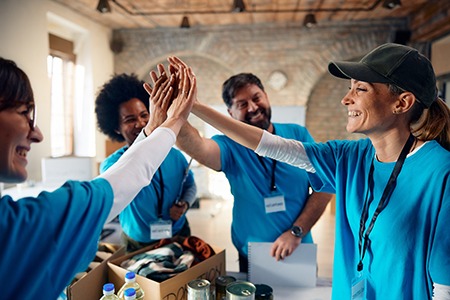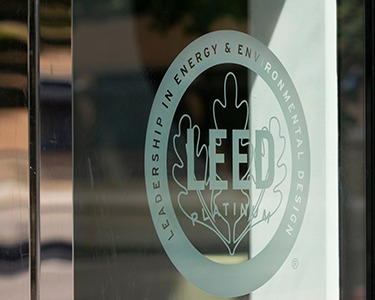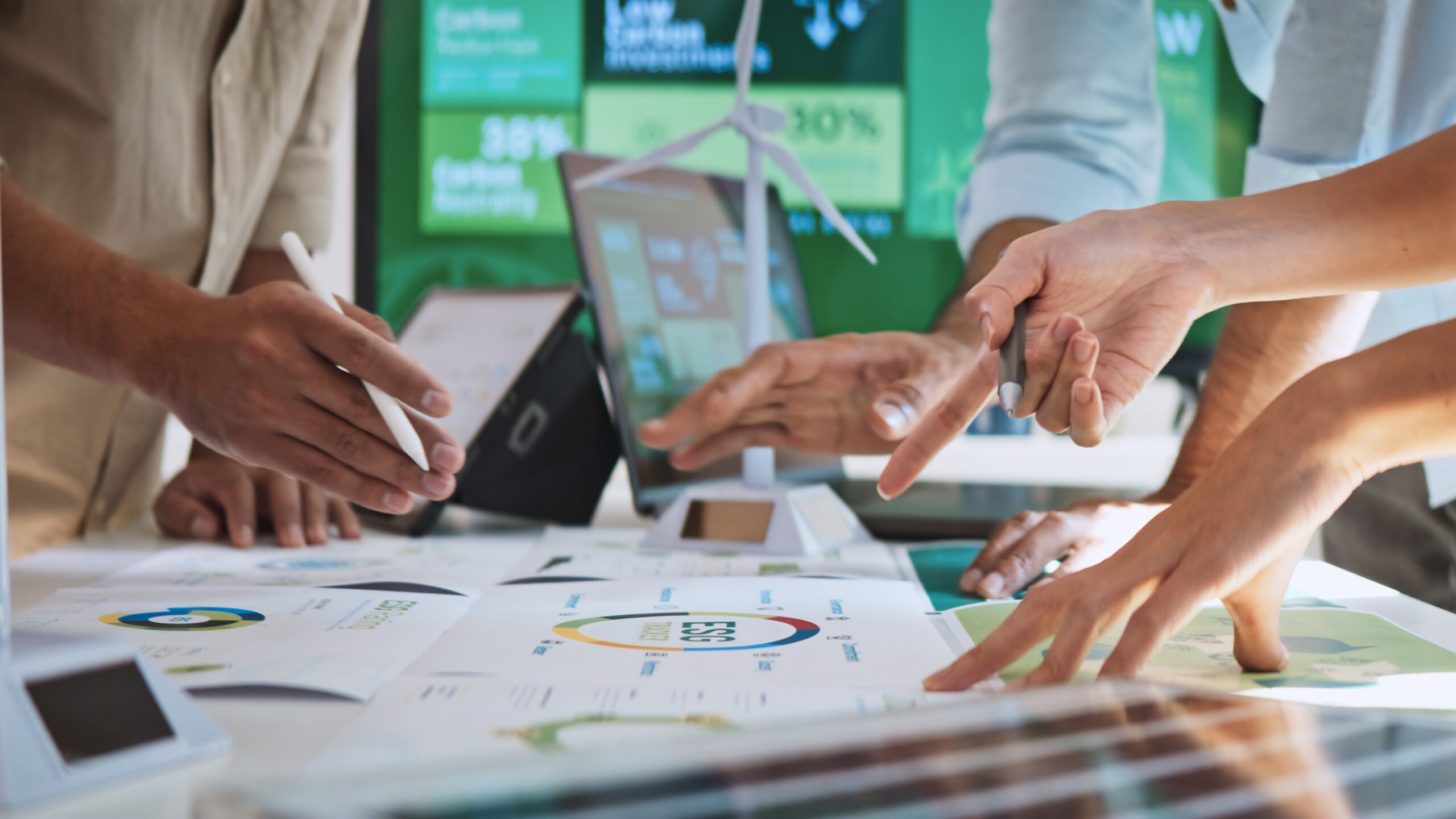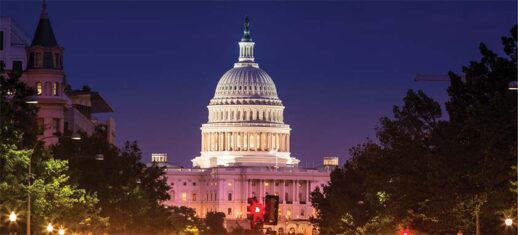Becoming a sustainable event planner is a marathon, not a sprint.
As the events industry continues to evolve in its sustainability journey, there are a lot of accomplishments to celebrate. Planners, partners and attendees are more aware and invested than ever. But there’s no denying that sustainability is a very broad topic, and sometimes, you might feel left in the dust.
 Smart Meetings’ October webinar, From Checkboxes to Strategy: Implementing and Leading Sustainable Event Practices, breaks it down. Creating more sustainable events is a journey, and it comes down to breaking it up into bite-size bits. As planners learn more about practical best practices and work to implement them in their meetings, before they know it, the scope and scale of sustainability don’t seem nearly so daunting.
Smart Meetings’ October webinar, From Checkboxes to Strategy: Implementing and Leading Sustainable Event Practices, breaks it down. Creating more sustainable events is a journey, and it comes down to breaking it up into bite-size bits. As planners learn more about practical best practices and work to implement them in their meetings, before they know it, the scope and scale of sustainability don’t seem nearly so daunting.
If you’re just getting started on your sustainability journey, or you’ve found yourself stuck and aren’t sure where to go next, the experts in this webinar have actionable steps alongside overarching mindset shifts that can help you continue to grow.
Meet the Experts
Ellie Hurley, events director at Financial and Insurance Conference Professionals (FICP), has spent the past three years leading FICP’s event-specific approach to sustainability and social impact and also holds the Sustainable Event Professional Certificate (SEPC) from Events Industry Council (EIC).
She was joined by Tiffany Eck, associate director, destination services at Visit Denver. In addition to overseeing Visit Denver’s sustainability initiatives, she has served as a member of the EIC Sustainable Event Standards Committee and is a former Event Services Professional Association board member.
The panel was rounded out with Lori Allen, vice president of global event operations at Metlife, who has spent 20 years overseeing and enhancing global event strategies and brings particular expertise in managing complex global programs, consolidations, multi-regional contracts and fostering stakeholder engagement to meet business objectives. She is also an FICP board member.
Read More: Sustainability as a Practice
Defining Sustainability
The discussion began with a broad overview of what sustainability means to each speaker. Over the past few years, the term has become somewhat of a buzzword, and it’s important to remember that “sustainability” refers to many dynamic practices and goals.
Addressing Metlife’s cohesive sustainability strategy, Allen said, “Sustainability can be such a big thing, especially when you’re looking to define it…But sustainability at Metlife really aligns with our corporate purpose, which is always with you building a more confident future. It’s really about protecting the environment, but also improving the places that we live and work, and improving the lives of both our customers, our shareholders and our associates.”
The Building Blocks of Sustainability Strategy
When it comes to the idea of a strategy, how we define sustainability must address many layers. “As far as the definition goes,” said Hurley, “it’s a lot more than being green. If you look at the [United Nation’s] Sustainable Development Goals, and ESG [Environmental, Social and Governance] strategy overall, there’s so much more to it—from corporate responsibility to, basically, sustaining the human race and the earth.”
Eck jumped in to round out the social impact lens of sustainability. She said, “The environmental and cultural impact piece has really been a driver in the last five—maybe not even five—years. Originally, it was just about waste…and when we talk about that social impact, it’s, ‘What is your community doing to give back?’”
Baby Steps for Big Impact
Due to the broad nature of sustainability, it can feel like a massive journey to undertake. “It becomes really overwhelming, too, when you’re thinking about the way to implement event practices in this space, because it does encompass so much,” said Allen.
To deal with this overwhelm, particularly for those at the beginning of their sustainability journey, Hurley said, start small. Choose one sustainable practice to implement—and then, master it. The following year, add something else. “Just don’t let feeling overwhelmed stop you,” she urged. “You don’t have to be perfect your first time around. Make a small step.”
Read More: Sustainability Tools for Easier Green Planning
 In fact, many are probably already further along than they expect. Allen said, “A lot of what you’re already doing is probably something that’s contributing to your sustainability activity and metrics that you can measure. As an events professional, one of the things we look at is, how are you measuring this? How are you reporting out on this? How are you showing that what you’re doing is making an impact?”
In fact, many are probably already further along than they expect. Allen said, “A lot of what you’re already doing is probably something that’s contributing to your sustainability activity and metrics that you can measure. As an events professional, one of the things we look at is, how are you measuring this? How are you reporting out on this? How are you showing that what you’re doing is making an impact?”
Just as planners gather data to show overall attendee satisfaction, for example, planners can gather data on the sustainability of their meeting, its carbon footprint, the amount of waste produced and the practices that helped offset emissions. “Even choosing a hotel that’s LEED certified is an action that is impacting and contributing to your sustainability measures,” Allen said. “Or maybe you do activities that have more of a volunteerism or community service angle. A lot of what you’re doing already can actually fit into these goals if you’re just a little bit more mindful about it.”
The resources are there for you. Take advantage of them!
DMOs are one of the best resources for planners on this sustainability journey. Eck explained, as a DMO, “[Visit Denver’s] job is to be that data collection and source to provide those opportunities for our clients. We’ve done a lot of data collection, let’s say, from our hotels. And we put that on our website. So, we survey our downtown hotels every two years on what they’re doing in a sustainability realm.”
Read More: ExCel London Paves the Way for Green Meetings
 The data on sustainable hotels in a destination, available on a DMO website, is a prime example of the kinds of resources that enable planners to more easily prioritize sustainability.
The data on sustainable hotels in a destination, available on a DMO website, is a prime example of the kinds of resources that enable planners to more easily prioritize sustainability.
“I also think,” Eck added, “from that local standpoint, it helps our other hotel partners to say, ‘Oh, well, they’re doing that; maybe we should do that.’” In this way, not only are DMOs providing access to the information planners need to create more sustainable meetings; they are also inspiring innovation and investment in sustainability throughout businesses in the destination they represent.
Messaging with Purpose
Eck said that one major piece that makes all the difference—but often gets missed—is messaging. When you implement a massive change for the sake of more sustainable meetings, share the story behind it. “I think that is often a missing piece, and it’s often that missing link for attendees,” Eck explained. “If you’re going to make a drastic change to something, tell the why behind it, because then they understand and they can get behind the messaging.”
Communication is everything when it comes to developing a sustainability strategy. Talk to your team and other organizations about what they’re doing; you may just stumble upon an idea you’ve never considered.
Action Plan
With so much to consider, as the speakers addressed, deciding where to get started is the most difficult part. Hurley, Eck and Allen went around and shared some concrete questions planners can ask themselves as they develop a sustainability strategy. And, as they also addressed, if you’re just starting out, just choose one! Make one change; perfect it. Then, next year, tack on another. Before you know it, you’ll be a sustainability superstar.
-
What’s in your RFP?

RFPs are the very beginning, so by asking questions about a venue or hotel’s sustainability practices, you’re starting strong. Do you ask about food sourcing and waste handling? Do you ask about the location’s carbon impact, such as if it has LEED certification or solar paneling? How walkable is the area?
By asking these questions at the start, planners are also able to report about these topics and how successful they were, post-event.
Read More: The Overlooked RFP Asks That Could Save the Planet
-
How are you doing posterboards?
Sometimes, last-minute changes come up. When you’ve printed your posterboards weeks ago, they may not be accurate. Consider finding a venue that enables you to use video boards, so your information is always up-to-date, and in the process, you’ve eliminated using materials like Styrofoam that have a negative impact on the environment.
Or, if you still want to print out your posterboards, consider alternative materials like cardboard or honeycomb that are more recyclable.
-
Where are you sourcing?
When you work with suppliers, ask them about their operations. How do they package? Will you receive a box of hundreds of individually plastic-wrapped items? Ask the supplier if they offer environmentally-friendly packaging options.
Another way to reduce waste and carbon impact in this case is to source locally, and therefore eliminate any additional emissions created by shipping materials that you could source from an organization based closer to your event location.
-
How are you incentivizing attendees to get their heads in the sustainability game?
Gamification is a longstanding champion of getting attendees involved and invested. Set up a program where attendees can get points for different sustainable practices, such as bringing their own reusable water bottles or attending a volunteer event.
-
How are your attendees getting there?
If the destination is walkable, more attendees are walking to and from the hotel and conference center, which can help to offset the carbon emissions produced through their travel to the destination.
We know that air travel has one of the largest carbon impacts when it comes to events. If your attendees are all localized around one area, it can make a major difference to book a venue that many of them can get to without air travel. Or, look into the kinds of flights available and consider whether most attendees will be able to book a direct flight over one that requires connecting flights.
Read More: Green Airports
-
Commit to continued learning.
Take advantage of the resources at your disposal. Consider pursuing a sustainability credential like the SEPC. If you’re earning CEUs, take courses on sustainability. Set aside time to do some research and explore sites focused on sustainability, like the UN’s 17 Sustainable Development Goals and FICP’s sustainability and social impact resources, and for more tips like the ones above, read through the 10 Ways Meeting Professionals Can Consider Sustainability in Event Planning on that page.
And of course, watch the webinar on Smart Meetings’ webinar archive to hear all these insights and more, right from these experts themselves.




